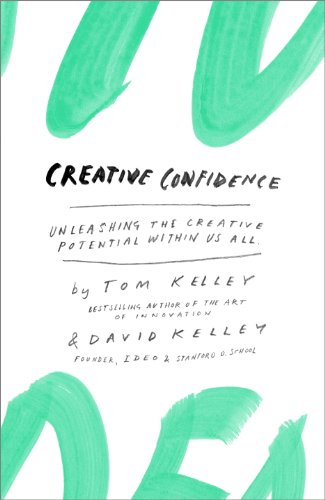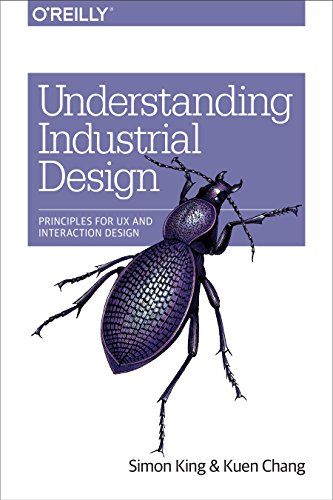Top products from r/UXDesign
We found 24 product mentions on r/UXDesign. We ranked the 17 resulting products by number of redditors who mentioned them. Here are the top 20.
1. UX for Beginners: A Crash Course in 100 Short Lessons
Sentiment score: 0
Number of reviews: 1
O Reilly Media
 Show Reddit reviews
Show Reddit reviews2. Intuitive Design: Eight Steps to an Intuitive UI
Sentiment score: 1
Number of reviews: 1
 Show Reddit reviews
Show Reddit reviews3. Logitech MX Master 2S Wireless Mouse – Use on Any Surface, Hyper-fast Scrolling, Ergonomic Shape, Rechargeable, Control up to 3 Apple Mac and Windows Computers (Bluetooth or USB), Graphite
Sentiment score: 0
Number of reviews: 1
Advanced ergonomic design: Perfectly sculpted, hand crafted shape supports your hand and wrist in a comfortable, natural positionAuto shift scrolling: Speed adaptive scroll wheel auto shifts on the fly from click to click to hyper fast scrolling; Wireless operating distance: 10 mBattery: rechargeabl...
 Show Reddit reviews
Show Reddit reviews4. Lean UX: Designing Great Products with Agile Teams
Sentiment score: 2
Number of reviews: 1
 Show Reddit reviews
Show Reddit reviews5. Don't Make Me Think, Revisited: A Common Sense Approach to Web Usability (Voices That Matter)
Sentiment score: 2
Number of reviews: 1
 Show Reddit reviews
Show Reddit reviews6. The Design of Everyday Things: Revised and Expanded Edition
Sentiment score: 2
Number of reviews: 1
 Show Reddit reviews
Show Reddit reviews7. The Brain Audit: Why Customers Buy (And Why They Don't)
Sentiment score: 1
Number of reviews: 1
 Show Reddit reviews
Show Reddit reviews8. Creative Confidence: Unleashing the Creative Potential Within Us All
Sentiment score: 2
Number of reviews: 1
 Show Reddit reviews
Show Reddit reviews9. Understanding Industrial Design: Principles for UX and Interaction Design
Sentiment score: 1
Number of reviews: 1
O'REILLY
 Show Reddit reviews
Show Reddit reviews10. Never Split the Difference: Negotiating As If Your Life Depended On It
Sentiment score: 1
Number of reviews: 1
Harperbusiness
 Show Reddit reviews
Show Reddit reviews11. Bottlenecks: Aligning UX Design with User Psychology
Sentiment score: 0
Number of reviews: 1
 Show Reddit reviews
Show Reddit reviews12. Web Design with HTML, CSS, JavaScript and jQuery Set
Sentiment score: 2
Number of reviews: 1
Wiley
 Show Reddit reviews
Show Reddit reviews13. Designing for the Digital Age: How to Create Human-Centered Products and Services
Sentiment score: 1
Number of reviews: 1
 Show Reddit reviews
Show Reddit reviews14. The Design of Everyday Things: Revised and Expanded Edition
Sentiment score: 1
Number of reviews: 1
Basic Books AZ
 Show Reddit reviews
Show Reddit reviews15. 100 Things Every Designer Needs to Know About People (Voices That Matter)
Sentiment score: 1
Number of reviews: 1
New Riders Publishing
 Show Reddit reviews
Show Reddit reviews

First of all, what makes you think I am not from a developing nation?
Let's please get past this third world bullshit. You can do better.
Secondly, implicit in your question is the idea that customers want cheaper work, not better work.
This is simply not true.
If you make the conversation about price then people will almost always look for a cheaper option.
But sometimes people want to work with people who are more pleasant, and will happily pay more.
Maybe clarity of communication is what they are after, and they will pay more for someone who speaks english as their first language, someone who instantly understands what they are after.
A lot of the time clients want quality, and they know they will have to pay for it.
My point is that there are lots of ways to compete, and price is usually the lowest common denominator. So there are so many different kinds of better, and there's probably a market for most of them. As a freelancer your time is scarcest commodity in the equation, you only need a hand full of well-paying clients who want your version of better to sustain a business.
If you are used to competing on price then maybe its time to look at what you do best and start competing on that instead. Speak to your last 5 clients and ask them what they loved about working with you and what they thought you could improve on. That's always a good place to start work on how to differentiate yourself.
Sean D'Souza also has some excellent writing and thoughts about developing your uniqueness in his book The Brain Audit and on his blog. Definitely worth checking out if this is something you want to explore further.
Sure!
​
I think two classic books to start with is
​
Then I would move onto IDEO's Creative Confidence (https://www.amazon.com/Creative-Confidence-Unleashing-Potential-Within-ebook/dp/B00CGI3DWQ), which documents tons of different UX methods. Also, I haven't read it, but I've heard that Lean UX is a great book (https://www.amazon.com/Lean-UX-Designing-Great-Products-ebook/dp/B01LYGQ6CH).
​
Oh and to learn HTML, CSS, and JS (if you don't know them already), these are AMAZING reads: https://www.amazon.com/Web-Design-HTML-JavaScript-jQuery/dp/1118907442/ref=sr_1_3?crid=1QXNLBZ2V6GL8&keywords=learn+html+css+javascript&qid=1558328362&s=gateway&sprefix=learn+html+css+ja%2Caps%2C-1&sr=8-3
​
With that said, I know books are a big commitment so here's a random assortment of UX articles I've bookmarked over the years to get you started (some may be a little old but should still hold up from a process standpoint):
​
There's a lot more where that came from, so let me know if you get through that and are craving more material.
​
Here are a couple videos as well:
​
Finally, here's a very very short article I wrote myself that provides a quick intro into human centered design: http://www.jdktech.com/human-centered-design/
​
As you dive into this, note that user interface design and user experience design are different things--although they overlap and rely on each other in various ways. You can be a user interface designer (in which case I would recommend different reads), a user experience designer, or both. I'm a full stack designer, which means I specialize in all sides of the product life cycle, including research, validation, design, product management and development.
​
Hope this helps! Let me know if you have any other questions!
I started a freelance web design business about 5 years ago. Within a year or so I had doubled the income of my FT job.
Now I help people learn to do the same at https://selfmadewebdesigner.com
I agree with refractal. Sales is a muscle you’ve got to build. And pay your taxes 🤣
One way you can start is by reaching out to people you know that have businesses and could use your skills. Practice your pitch on them.
Since they have a relationship with you all ready it’s not as a big a deal if you flop the pitch.
I think a lot of people have a problem with sales because they feel like they’re trying to pull one over on something.
Like you’re a multi level marketer convincing someone to get on the ground floor of this amazing deal.
A sales conversation is all about building a relationship with someone and seeing if you can help them. Don’t hide your limits and don’t over promise.
If you walk into it just wanting to care for and do what’s best for the person you’re talking to then it’s tough to get it wrong.
A good book to read is called Never Split the Difference
Is there opportunity at your company to conduct user research? Is there a team devoted to it or do senior designer do research? Have you stumbled across situations where research would help you answer questions about your designs and prototypes?
Having a more advanced degree in some form of research, psychology or advanced UX/HCI would be beneficial if what you really want to do is research. Most of the user researchers I work with have masters in market research or user research and also teach classes to undergrads.
However you do not have to have a degree to learn it. There’s a few books out there that can help, such as Interviewing Users: How to Uncover Compelling Insights or Validating Product Ideas: Through Lean User Research
I also love this book that doesn’t have much to do with research but more about the behavioral science behind user interactions
100 Things Every Designer Needs to Know About People (Voices That Matter) .
>Are there any UX designers who work with physical products?
This book is explicitly about UX Designers doing Industrial/Hardware work which I found really useful. The scope of UX has always extended outside of laptops/desktops/tablets, but people who enter this field without understanding it or its roots mistakenly think that their work starts and stops at the 2D interface
You'll also find that most Interaction Design university courses talk at least a little bit about integrating digital technology into physical products - a project of mine in design school had me hook up an Arduino to a clock and a proximity sensor and some LEDs near the entrance to my university and had the entire thing show different pictures to people coming in based on if they were late or not, and logged the date and time at which the proximity sensor was triggered. I then visualised that data, extracted insights from it and made an infographic on punctuality and attendance habits and it was a lot of fun.
There are absolutely UX designers who work with physical products - you'll find a lot of Internet of Things and Home Automation companies employing them. UX designers are also involved with stuff like gaming consoles, smart appliances etc
The definitive how-to is in Kim Goodwin’s book Designing for the Digital Age. It is far more comprehensive than Alan Coopers probably because while he invented the concept she was the one putting them into practice at Cooper.
It does the best job describing exactly how to identify patterns in research that lead you to how many Personas actually exist and how to frame them. I wish more people were familiar with it because I see so much confusion about Personas based on bad templates not process.
Here’s a testimonial:
“Her work on Goal-Directed Design and persona development has set a standard." —Jared Spool
I recommend Golden Krishna's - The best interface is No interface
This is a great starting point and the industry references this book quite a bit.
Another is The Design of Everyday Thing, by Don Norman
Wrong sub? Either way, the Logitech MX Master 2S is the best productivity mouse. It's on sale too.
You have the pretty straightforward idea of the process.
As for deliverables, it really depends on the product/situation, but wireframes will be a staple.
There’s low fidelity wireframes (pencil and paper), high fidelity wireframes or mock ups (sketch, figma, adobe xd)
prototyping (InVision, protopie, principle, flinto).
Use whatever you feel most comfortable with.
Check out this page to get the basic ideas: https://uxplanet.org/ux-for-beginners/home
And check out this book to get a quick run down:
https://www.amazon.com/UX-Beginners-Crash-Course-Lessons/dp/1491912685/ref=mp_s_a_1_fkmrnull_1?keywords=ux+for+beginners+crash+course&qid=1557450031&s=gateway&sr=8-1-fkmrnull
Bottlenecks: Aligning UX Design with User Psychology by David C Evans
https://www.amazon.com/Bottlenecks-Aligning-Design-User-Psychology/dp/1484225791
Don't Make Me Think, by Steve Krug